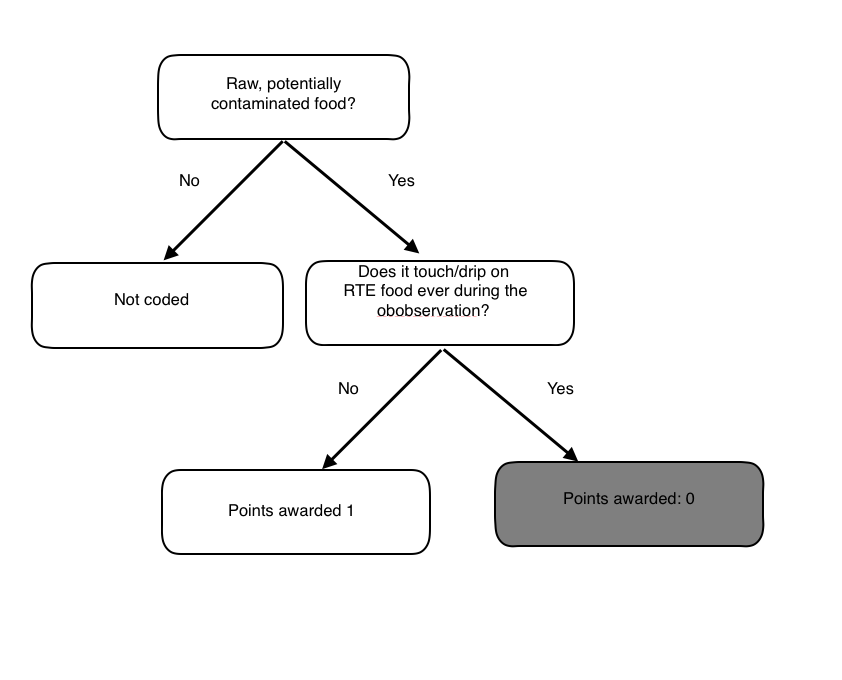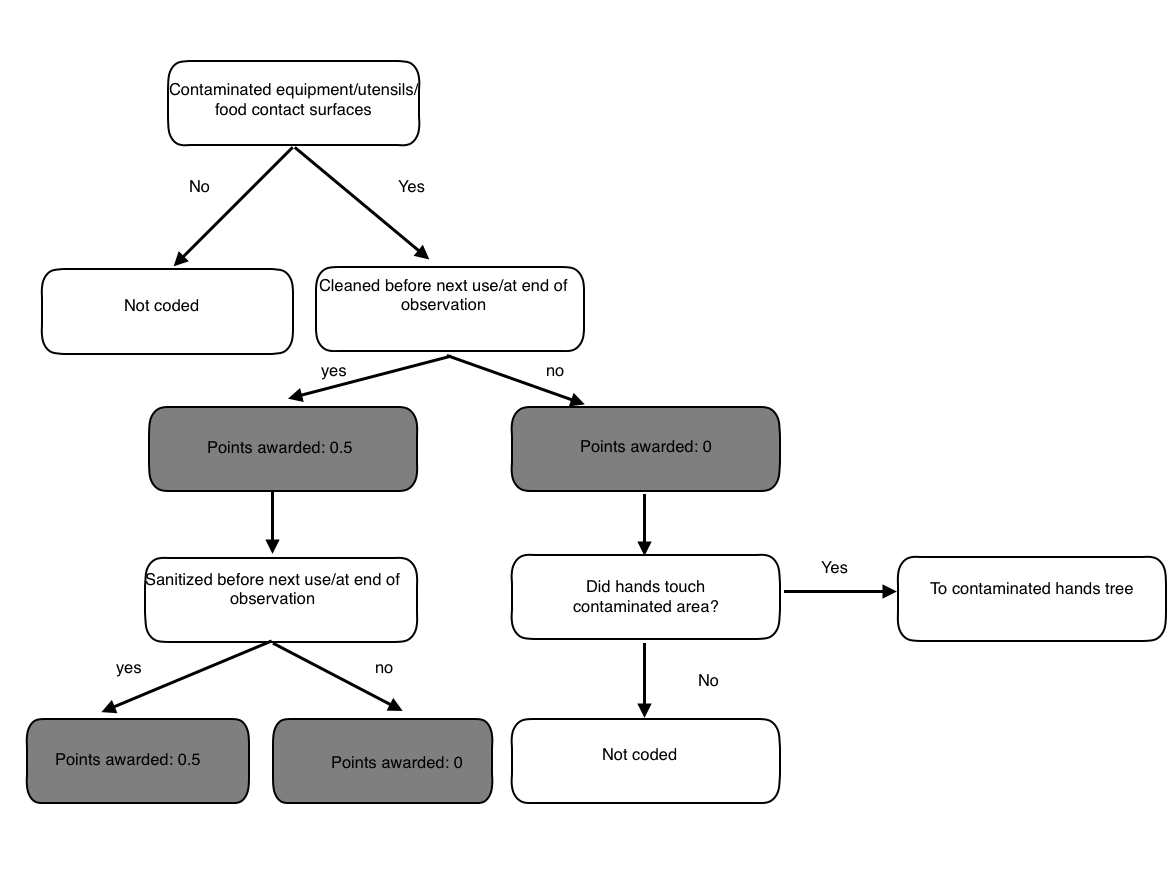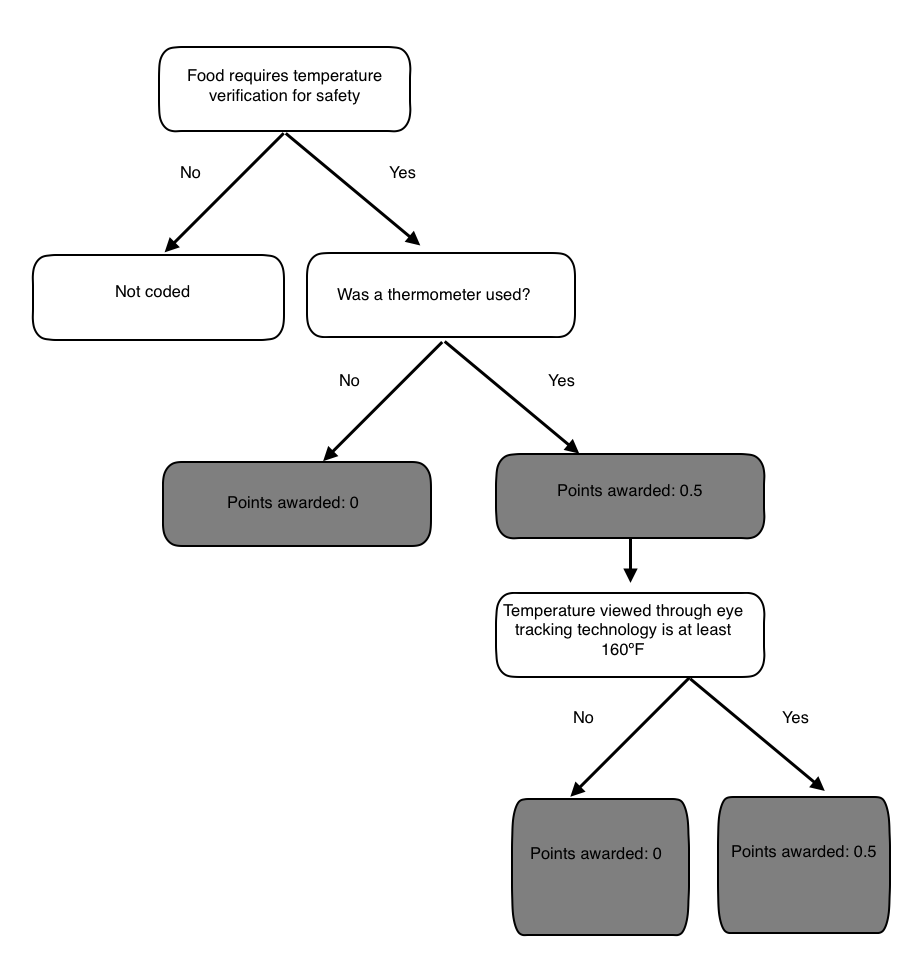Observation Rubric
Appendix M_SHI_observation rubric_decision_trees_FINAL_10_12_18.docx
Consumer Research on the Safe Handling Instructions Label for Raw and Partially Cooked Meat and Poultry Products and Labeling Statements for Ready-to-Eat and Not-Ready-to-Eat Products
Observation Rubric
OMB: 0583-0177
Appendix M:
Observation
Rubric
During the meal preparation experiment, participants will prepare homemade meatballs starting with raw ground beef, frozen (uncooked) pre-packaged meatballs, and a cherry tomato garnish. We developed separate coding rubrics (formatted as action decision trees) that we will use to assess whether participants followed the recommended instructions on the SHI during the meal preparation experiment:
handwashing – CLEAN HANDS message (Figure 1)
direct cross-contamination – SEPARATE message (Figure 2)
indirect cross-contamination – CLEAN/SANITIZED SURFACES message (Figure 3)
thermometer usage – COOK message (Figure 4)
Trained observers will watch the videos and follow the decision trees to indicate level of adherence to the recommended practices.
Figure 1. Handwashing action decision tree (CLEAN message)

Hands should be washed at the start of food preparation as well as at any point that they become contaminated. If not washed at the start of preparation, hands are defined as contaminated through assumption.
Contaminated hands: Hands that have come into contact with potentially contaminated material (raw food, contaminated equipment, touching of face or other parts of body or clothing, food packaging) and that have not been washed according to the CDC’s recommended guidelines for proper handwashing.
Elements of handwashing (bolded words indicate components that will result in point scores):
0.25 points: Wet your hands with clean, running water (warm or cold), turn off the tap, and apply soap or Rinse your hands well under clean, running water.
0.25 points: Lather your hands by rubbing them together with the soap. Be sure to lather the backs of your hands, between your fingers, and under your nails.
0.25 points: Scrub your hands for at least 20 seconds.
0.25 points: Dry your hands using a clean towel or air dry them (mechanical air dry).
https://www.cdc.gov/handwashing/when-how-handwashing.html
Figure 2. Direct cross-contamination action decision tree (SEPARATE Message)

Raw, potentially contaminated food: food that may contain harmful bacteria that can cause illness due to lack of a cooking step or coming into contact with contaminated surface.
Figure 3. Indirect cross-contamination action decision tree (CLEAN/SANITIZE SURFACES)

Definitions:
Contaminated equipment: equipment (e.g., cutting board, plate utensils) that has come into contact with potentially contaminated food or another potentially contaminated surface and that has not been properly washed and sanitized.
Was it cleaned/sanitized before next use? The surface was considered cleaned if the participant if the participant used soap and water to scrub the surface and wiped dry with a clean, one-use towel.
Was it sanitized before next use?
The surface was considered sanitized if the participant used one of the provided sanitizers (Clorox, Clorox wipes, 409 Spray, Lysol disinfectant spray) to spray the surface and wiped dry with a clean, one-use towel, or if placed into dishwasher. For an attempt to be scored a 1, the surface had to first be cleaned and then sanitized.
Figure 4. Thermometer use decision tree (COOK)

Temperature: observer will obtain temperature by watching the video of the participant’s cooking process recorded by the eye tracking device
| File Type | application/vnd.openxmlformats-officedocument.wordprocessingml.document |
| Author | Ben |
| File Modified | 0000-00-00 |
| File Created | 2021-01-20 |
© 2025 OMB.report | Privacy Policy